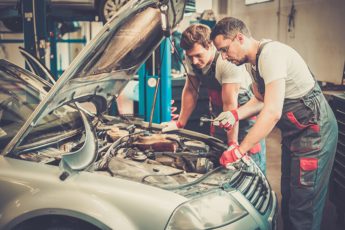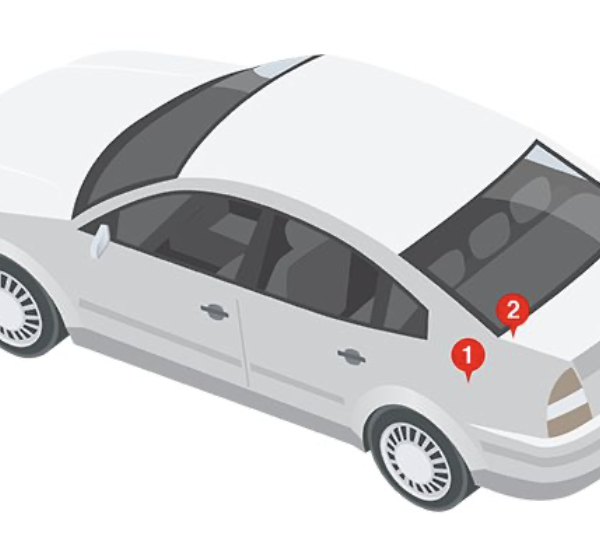How Maintenance Impacts Car Longevity

How Does Regular Maintenance Impact The Life Of Your Vehicle?
It is one of the most significant financial investments you will ever make. When it looks good, so do you. Perhaps most important, it gets you where you need to go reliably day after day. We’re talking about your car, of course. Given all of these reasons, it just makes sense to do everything you can to prolong the usability of your automobile.
One set of techniques that you can adopt to
protect and preserve your car does not involve the use of a single tool.
Instead, we’re talking about the ways you drive. Keep these car-saving
strategies on your radar:
- Drive light, only putting heavy cargo in your vehicle when absolutely necessary.
- Be smooth when you shift the gears.
- Do not drive at excessive speeds.
- Give your car time to warm up on cold mornings before zooming out of your driveway.
While none of these suggestions will eliminate the need for other types of maintenance, they will definitely keep your vehicle’s moving parts operating more smoothly for longer.
The Benefits Of Regular Car Maintenance
The above recommendations, while helpful, will only go so far. They need to be augmented by regular maintenance. Here’s why:
Increased affordability
Think of the reason you do auto maintenance as similar to why you go to the dentist every six months. During these visits, the doctor takes a thorough look at your mouth, diagnosing current problems and identifying trouble spots that could benefit from preventive treatments. Most people would far prefer regular cleanings and scalings to a root canal that could have been avoided if the decay had been caught early. Your car is no different.
Problem prevention
Rust is a perfect example. Although modern vehicles are less likely to sustain rust damage than the cars of years ago, oxidation still can and does happen. Taking time to visually inspect your car and address small dings and scratches when they arise can reduce the chances of bigger rust problems down the line.
Better reliability
Performing regular maintenance allows you to have an ongoing, clear picture of the overall health of your vehicle. Although unpleasant surprises can still happen, they are far less likely.
Increased sales price
Right now, you might believe that the day will never come when you want to sell your automobile, but times and circumstances change. Whenever that time arrives, a history of conscientious maintenance can actually pay off in real financial terms. This is particularly true if you keep written documentation of what parts you have replaced, their brands, who did the job and when.
Improved fuel efficiency
When your engine is running at peak performance, it is using fuel to the best of its ability, thus saving you money in the long run.
Greater safety
When all of the moving parts of your engine are working together in perfect synchronicity, your vehicle is less likely to break down unexpectedly. Considering that these disasters usually happen at the worst possible times – at night in a blizzard comes to mind – regular maintenance can give you a great deal of peace of mind.
It is one of the most significant financial investments you will ever make. When it looks good, so do you. Perhaps most important, it gets you where you need to go reliably day after day. We’re talking about your car, of course. Given all of these reasons, it just makes sense to do everything you can to prolong the usability of your automobile.
One set of techniques that you can adopt to protect and preserve your car does not involve the use of a single tool. Instead, we’re talking about the ways you drive. Keep these car-saving strategies on your radar:
- Drive light, only putting heavy cargo in your vehicle when absolutely necessary.
- Be smooth when you shift the gears.
- Do not drive at excessive speeds.
- Give your car time to warm up on cold mornings before zooming out of your driveway.
While none of these suggestions will eliminate the need for other types of maintenance, they will definitely keep your vehicle’s moving parts operating more smoothly for longer.
Car Maintenance That Should Be Performed
Regularly
For the very big, complex jobs, it is usually recommended that you hire a mechanic. Today’s automobiles feature complex “brains” and electronic systems whose maintenance requires the use of proprietary equipment that the layperson does not possess. However, there are still a number of maintenance steps you can take on a regular basis to prolong the life of your car.
Oil check

This is different from and less involved than an actual oil change. It simply involves visually checking the level of oil in your tank and adding more if it starts to get low.
Oil changes

Think of oil as the lifeblood of your car. It lubricates all of your engine’s moving parts and helps to dispose of impurities. When it becomes dirty and clogged with gunk, it is as if your car’s arteries have become congested. After a while, your engine’s performance suffers. Changing your oil is inexpensive, can be accomplished quickly and can keep your engine fit as a fiddle.
Coolant check

As the name implies, coolant is what keeps your engine from overheating. When it begins to run low, you risk damage to your engine parts. Keep an eye on your coolant level, topping it off when necessary.
Coolant replacement

Over time, coolant can become more acidic, which reduces its ability to fight rust. The end result is corrosion and damage to parts such as your hoses, radiator cap, thermostat, radiator, water pump and other parts. When this occurs, your engine can overheat. Avoid this possibility by replacing your coolant and antifreeze according to your vehicle’s owner’s manual.
Paintwork touchup

Dings and scratches are even more than just unsightly. They are chinks in your car’s armor that allow the process of corrosion to begin. Maintaining a sealed finish can help to keep this from happening while simultaneously improving the appearance of your ride.
Waxing

When you apply a coat of wax to the finish of your clean car a few times a year, you are arming it with an extra layer of protection. Sun, road salt, insects, dirt and grime are unavoidable. However, high-quality wax makes it possible for you to easily clean them off with virtually no difficulty at all.
Tire pressure check

Your tires are the only things between your car and the road. For that reason, they always need to be in excellent condition. That starts with their pressure, which you should check regularly. Make it a habit to do so every time you refuel at the pump.
Tire tread check

It’s easy to forget about your tire treads, but they perform a vital function. If your treads are not deep enough, you run a greater risk of getting into an accident. This is because treads are designed to keep water flowing out from under the tire on wet roads. When they are not deep enough, the water begins to pool and can cause the tire to lose its traction and slip on the road’s surface. Tire tread depth is measured in 32nds of an inch. Ideally, your treads should measure 10/32 of an inch or deeper in the winter. If you use the “Lincoln’s head” trick to measure your tread depth and can see the entire head, your tread is at 2/32nds of an inch and needs immediate replacement.
Tire rotation

With today’s modern tires, it is easy to forget that they need any maintenance at all. However, it is extremely beneficial to rotate them according to your owner’s manual or every 5000 miles. In a typical rotation, you would move the front tires to the rear and the rear ones to the front. Tires that are rotated regularly wear more evenly and do not need to be replaced as often, thus saving you money. Regular tire rotation also helps you to maintain balanced handling. If, for instance, you fail to rotate the tires on a front-wheel-drive vehicle, you will end up with much less tread on your front tires than on your back ones, making vehicle control more difficult in wet conditions.
Battery check

A dead battery is literally a non-starter. Regularly checking your battery level as well as its terminals and cables can reduce the chances of your battery conking out at the worst possible time. If you live in a snowy part of the country, be sure to conduct a thorough battery check before the season starts as well as if you ever leave your car idle for a week or more.
Brake pad check

Your brake pads rest between your brake shoe and the brake drum. When they are deteriorated, other parts of your car such as the calipers and discs will wear out as well. Signs that your brake pads have gotten too thin and need to be replaced include screeching or squeaking when the brake is engaged, less than a quarter inch of pad, a metallic grinding sound or flashing indicator lights.
Interior cleaning

Clean seats, surfaces, windows and door seals can make your car both more comfortable to drive and more pleasing to look at. An annual air filter change can ensure that you are not breathing in dangerous engine fumes.
The Average Car’s Lifespan
Not so long ago, many people replaced their cars every two to five years, believing that the lifespan of most vehicles was not much longer than that. Thanks to technological advances, the majority of engines can run well for a decade over 200,000 miles. However, that is only the case if the automobile is properly maintained inside and out. If you practice a combination of careful driving, consistent do-it-yourself maintenance and
regular visits to a professional mechanic for the more complex tasks, you can reasonably expect a very long life from your car or truck.


 Cart
Cart
 Help Desk
Help Desk






